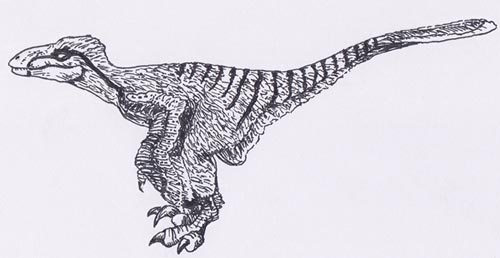Updating Dromaeosaurids
Updating Dromaeosaurid Illustrations
Time to update and re-evaluate some of the scale drawings and details within Everything Dinosaur’s range of fact sheets. The UK-based company has produced hundreds of dinosaur and prehistoric animal data sheets and from time to time, the information and illustrations needs to be updated. Over the next few weeks our team members will be concentrating on changing some of the information associated with our theropod fact sheets, specifically those associated with maniraptorans.
Preparing Theropod Fact Sheets
Updating Dromaeosaurid Illustrations
Picture credit: Everything Dinosaur
The picture above shows a picture of Deinonychus, as we prepare to update our fact sheet on this large “raptor”.
Visit the Everything Dinosaur website: Everything Dinosaur.
Maniraptoran Dinosaurs Defined
The Maniraptora is a clade of theropod dinosaurs consisting of those coelurosaurian dinosaurs that are closely related to birds (Aves). It includes the birds and the non-avian dinosaurs that were more closely related to them than to ornithomimids specifically, the type species Ornithomimus velox. The theropod dinosaurs that are more closely related to birds are classified into a sub-clade Eumaniraptora.
The Eumaniraptora (it means the “true maniraptorans”), consists of all the types of dinosaur more closely related to birds than to the oviraptorosaurs. The term Eumaniraptora is often replaced by the term Paraves, although palaeontologists do differ in their views as to the exact composition of Eumaniraptora and Paraves. Essentially, a dinosaur such as the sickle-toed-clawed Deinonychus (illustrated above), as a member of the Dromaeosauridae family, along with the troodontids and the true birds (Avialae), are components of this sub-clade.
View the dromaeosaurid models available in the Beasts of the Mesozoic model range: Beasts of the Mesozoic Models.


